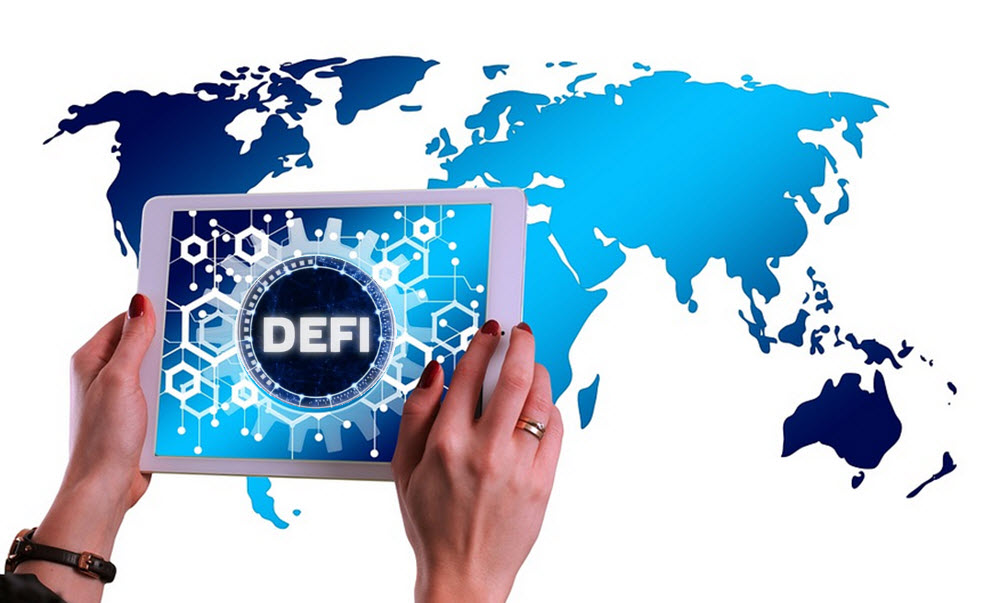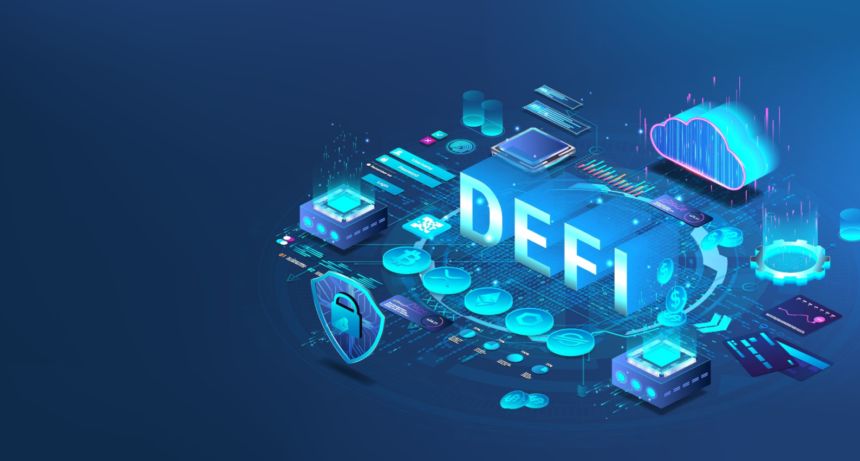The financial industry has long been dominated by centralized institutions, such as banks and government regulators, which control access to essential financial services. However, the rise of decentralized finance (DeFi) is shifting this landscape, offering innovative solutions that promote financial inclusion and eliminate intermediaries. DeFi leverages blockchain technology to create an open, transparent, and accessible financial system that empowers users across the globe.
Understanding Decentralized Finance (DeFi)
Decentralized finance refers to a system of financial applications built on blockchain networks that enable users to conduct transactions without relying on traditional banks or financial intermediaries. By utilizing smart contracts—self-executing agreements with pre-programmed terms—DeFi applications allow for seamless peer-to-peer transactions.
Unlike conventional financial institutions, DeFi platforms operate on decentralized networks, making them more resistant to censorship and fraud. This innovative approach not only enhances security but also improves transparency, as all transactions are recorded on a public ledger, ensuring accountability for all parties involved.
The Key Components of Decentralized Finance
The DeFi ecosystem comprises various applications and tools designed to replicate traditional financial services without the need for intermediaries. Some of the essential components include:
1. Decentralized Exchanges (DEXs)
Decentralized exchanges facilitate the buying and selling of digital assets without the need for a central authority. Unlike traditional exchanges that require users to deposit funds into a centralized account, DEXs allow individuals to trade directly from their wallets. This peer-to-peer model enhances security and reduces the risk of hacks or mismanagement by centralized entities.
Popular DEX platforms, such as Uniswap and SushiSwap, use automated market-making (AMM) algorithms to enable seamless trading. These protocols rely on liquidity pools, where users contribute assets in exchange for earning transaction fees, ensuring continuous liquidity and efficient price discovery.
2. Lending and Borrowing Protocols
DeFi lending and borrowing platforms, such as Aave and Compound, provide users with the ability to earn interest on their assets or borrow funds without traditional credit checks. These platforms use smart contracts to automate loan agreements, eliminating the need for banks as intermediaries.
By offering overcollateralized loans—where borrowers must deposit collateral worth more than the amount they borrow—DeFi lending protocols ensure a trustless environment. This method mitigates default risks while granting users access to capital without lengthy approval processes or credit score requirements.
3. Stablecoins and Decentralized Payments
One of the challenges in the cryptocurrency space has been price volatility, which has hindered mass adoption for everyday transactions. Stablecoins, such as DAI and USDC, address this issue by pegging their value to fiat currencies, providing a reliable medium of exchange within the DeFi ecosystem.
Decentralized payment platforms leverage stablecoins to facilitate cross-border transactions with lower fees and faster processing times compared to traditional banking systems. By eliminating intermediaries, these payment solutions empower individuals and businesses to access financial services without geographical limitations.
The Benefits of DeFi for Financial Inclusion

One of the most significant advantages of decentralized finance is its ability to provide financial services to underserved populations. Traditional banking systems often exclude individuals due to high fees, credit requirements, or lack of physical infrastructure. DeFi removes these barriers by offering permissionless access to financial tools, enabling anyone with an internet connection to participate.
For example, people in developing countries can use DeFi platforms to store value, earn interest, or access loans without requiring a bank account. This level of financial empowerment fosters economic growth and allows individuals to build wealth without relying on traditional financial institutions.
The Challenges and Risks of DeFi
Despite its numerous advantages, decentralized finance also comes with certain risks and challenges that users must be aware of.
1. Security Vulnerabilities
While DeFi eliminates the risk of centralized mismanagement, it introduces new security concerns related to smart contract vulnerabilities. Hackers often target poorly coded contracts, exploiting weaknesses to siphon funds from users. Ensuring proper security audits and using reputable DeFi platforms can help mitigate these risks.
2. Regulatory Uncertainty
Governments and regulatory bodies are still grappling with how to oversee the DeFi space. While decentralization provides freedom from traditional oversight, it also raises concerns about compliance with anti-money laundering (AML) and know-your-customer (KYC) regulations. Future regulatory frameworks could impact DeFi adoption and development.
3. Market Volatility and Liquidation Risks
DeFi lending protocols rely on collateralization to secure loans, but volatile market conditions can trigger automatic liquidations. If the value of a borrower’s collateral drops significantly, their assets may be liquidated to cover the loan, resulting in financial losses. Users must be cautious when participating in DeFi lending to avoid unexpected liquidations.
The Future of Decentralized Finance
As blockchain technology continues to evolve, decentralized finance is expected to become more sophisticated and accessible. Innovations in DeFi security, scalability, and interoperability will further enhance its adoption and integration into mainstream financial systems.
Moreover, institutional investors and traditional financial players are beginning to recognize the potential of DeFi. Some banks are exploring blockchain-based lending and trading solutions, indicating a potential convergence between decentralized and traditional finance in the near future.
Conclusion
Decentralized finance is transforming the financial landscape by providing open, transparent, and permissionless access to financial services. Through DeFi, individuals can trade assets, earn interest, borrow funds, and make payments without the constraints of traditional banking systems.
While challenges such as security risks and regulatory uncertainty remain, the benefits of DeFi far outweigh its drawbacks. As the industry matures, DeFi has the potential to reshape global finance, offering greater financial freedom and inclusion for people worldwide. With continued innovation, decentralized finance will play a pivotal role in the future of the financial sector, bridging the gap between the unbanked and the global economy.
